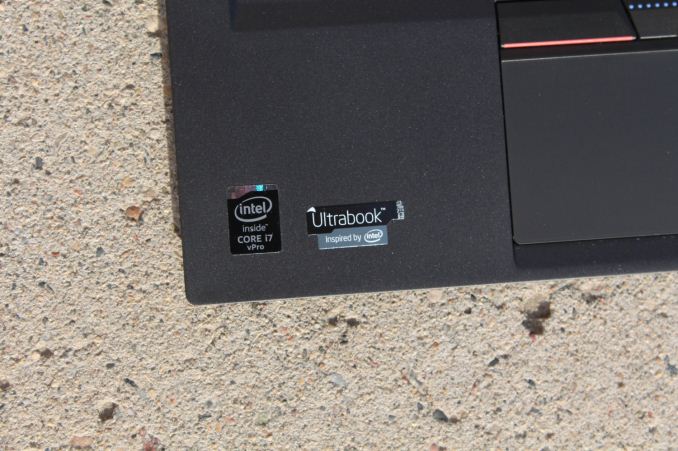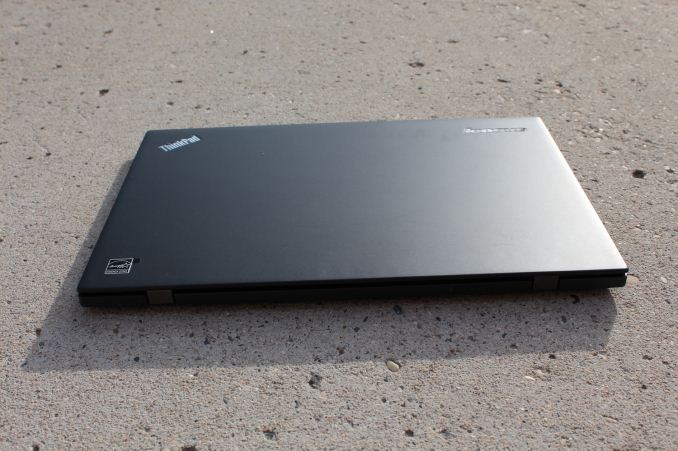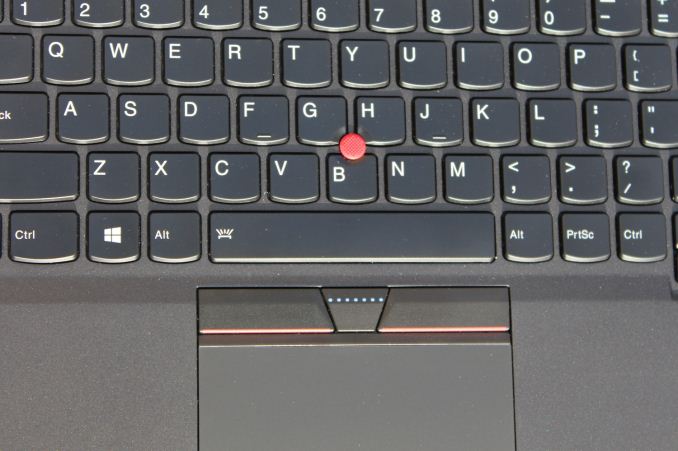The Lenovo ThinkPad X1 Carbon Review (2015)
by Brett Howse on May 21, 2015 8:00 AM EST- Posted in
- Laptops
- Lenovo
- ThinkPad
- Ultrabook
- Broadwell-U
Final Words
The X1 Carbon that Lenovo shipped out for review is likely the fastest Ultrabook yet. The Broadwell Core i7 is certainly a step ahead of the other devices we have tested, and the included PCIe SSD is basically the fastest drive offered today. It is also one of the most expensive Ultrabooks around, with the as-tested price as configured on Lenovo.com at $2100. That is a lot of money for an Ultrabook. The base price is a lot less, but at almost $1100 it is missing some important things like an IPS display and 8 GB of memory. Really the starting configuration is about $1300 once you add those on, and the price can go up again if you opt for more storage.
There is a tremendous amount of competition in the Ultrabook space, so Lenovo needs to differentiate the X1 Carbon and its higher than average price. It does that with the construction to start with. The carbon fibre top is incredibly strong for such a thin display, and the magnesium and aluminum lower half is also very stiff and feels solid. Yet at the same time, the weight of this device is extremely impressive at 2.8 to 3.1 lbs. That is only a hair more than the XPS 13, which has a smaller display and a much smaller body.
The keyboard is also very good on the X1 Carbon, and was likely the most enjoyable keyboard I have had the pleasure of using on an Ultrabook. There are devices out there which are better, but most of them are not this thin, and despite the reduced travel, typing was enjoyable. Lenovo also listened to its customer base and reversed their decision on the function keys, and we see a return of a much more traditional keyboard. I don’t love the Fn and Ctrl keys being reversed as compared to most devices, but it really did not take very long to get used to using it in a new location. For those that can’t adapt, you can go into the BIOS and swap the key functions. The backlighting also was nicely done and has several steps for brightness, and really make it easy to use in a dim setting.
I’m also a big fan of the TrackPoint and I personally find it to be a much more efficient way for me to navigate the GUI. For those that don’t like it, you can disable it (or the trackpad) in the mouse settings and just use the trackpad. Luckily the trackpad is also quite good on the X1 Carbon. There was not any latency that I could detect and it was very accurate with taps, double taps, and scrolling.
The fingerprint reader is also something that I wish was on every notebook. It makes it effortless to log in, and while biometrics may have their detractors, they do allow you to have complex passwords but not have to use them as much, which is going to be more secure than a password like 12345 (which is also the combination of my luggage) and with the Windows Hello initiative coming in Windows 10, there should be a bright future for this kind of login.
Not all is perfect, as with most things. The display is good, but not great. It was great to see Lenovo include an ICC profile but it is too bad that it is not more effective. The display is not overly bright, and the color accuracy is just average. Luckily this was the IPS model though.
The other big detraction was the battery life, which was certainly below expectations. The battery inside is not massive at just 50 Wh, but that means the device needs to be even more efficient, which it is not. Some of that comes down to the X1 Carbon having a physically larger display than most Ultrabooks of course, as well as a higher than average display resolution, but there is likely more to the story. In the end, what matters is the actual battery life, and it could not live up to the lofty results of recent times. At least it charges very quickly, which is a big help.
SIM Slot on the rear of the laptop
A lot of the competition has more USB ports as well, and most have SD card readers built in too. The X1 Carbon has just two USB 3.0 ports and no SD card reader. One partial trade-off is that it does offer a model with LTE connectivity.
Despite the battery life, I really enjoyed using the X1 Carbon. It has an understated look about it which is very traditional ThinkPad, but in a much slimmer design. It is very easy to carry around in a bag, and when you get where you need to go, there is plenty of power on tap to get your work done.














103 Comments
View All Comments
mmrezaie - Thursday, May 21, 2015 - link
I wish they had Iris GPU and also better battery life. I feel Macbook Pro 13 inch is still better option for developers like me.Kristian Vättö - Thursday, May 21, 2015 - link
As an owner of the X1 Carbon, I can say that the battery life is really awful. I went back to my 2010 13" MacBook Air because it provides better and more consistent battery life and in my usage there's no difference in performance.lilmoe - Thursday, May 21, 2015 - link
A review for the T-series is long overdue guys.T2k - Friday, May 22, 2015 - link
True.Samus - Thursday, May 21, 2015 - link
Lenovo has destroyed the Thinkpad name. They destroyed it years ago. The only high-end corporate laptops to consider are HP Elitebooks\Zbooks and a handful of Dell's. Every Thinkpad I've interacted with over the past few years is either on a replacement battery, has cracked USB ports with bent fingers, overheating issues causing flaky behavior, or a combination of these. Then there is the support, which is downright awful. Lenovo is notorious for throwing end-users under the bus, especially once they're out of warranty for such widespread symptoms that they should be recalls.Don't believe me? Search google for any of these issues, you will come across thousands of them, even though Lenovo has tried their damnedest to bury them within their own forums.
neo_1221 - Thursday, May 21, 2015 - link
I've got 40 4-year old T420 Thinkpads and 20 3-year old T430 Thinkpads at my school. Of those, I've only had to send two back for repairs - one with a dead battery, and one with a failed display. They may not be as solid as they were under IBM, but they're by no means bad laptops.CasualUker - Thursday, May 21, 2015 - link
The T420 and T430 where IBM designs. It wasn't till we switched over to the 540/440 series that it was done "in house." And looking at how they where built, I have zero confidence in them for long term durability vs the older series.Also on looking at the refurb department and seeing how many X1 Carbon Genesis and Mystics that needed to be repaired because of "faulty" mobos... Doesn't speak to well in terms of quality and for their future products.
chrnochime - Thursday, May 21, 2015 - link
Any link that states the T420 and T430 were designed by IBM? The closest I could find was that Lenovo kept some of the IBM thinkpad designers around for T430.CasualUker - Friday, May 22, 2015 - link
It was of IBM design, using the same suppliers and tolerance levels.I too thought it was strange since it was no longer that of a IBM company and Lenovo had bought out the Thinkpad name in 2005. But when we started on the Oasis and others in the x40 lines the engineers where very proud to tell me that the the whole thing was done "in house."
T2k - Friday, May 22, 2015 - link
IBM had nothing to do with the T420 and newer laptops, this is patently false.